
The Rise and Fail of Pro Evo
Rich
As a young boy I was taken to football matches on a fairly regular basis. However, it was all lost on me at the time as I never really understood the intricacies of the game. Not that I saw much intricacy as I was taken to various lower league London football grounds. Endless evenings spent at Gillingham, Leyton Orient and (hngggh) Charlton were all less fun than they might have been (especially when you don’t support any of those teams) and it would be many years before I could really give a toss about football.
However, as an avid gamer I’ve always enjoyed football games. From the 8-bit football mastery of Match Day 1 and 2 to the 16-bit days of Sensible World of Soccer, Super Soccer (Nintendo’s ultra-arcadey Mode 7 stab at the genre) and Striker, there has always been a tradition of good football titles in my gaming history.
When the Playstation-era ushered in the 3D age of console gaming, there was still some variety in the genre. Actua Soccer went for detail, statistics and simulation whilst Eidos’s Soccer ’97 was as arcadey as the genre gets (and had some fantastic ideas such as a backheel button) but the genre was about to get utterly dominated by two series. EA’s FIFA International Soccer had been around since 1994 and was fairly arcadey albeit with accurate player licensing and team details. The series really hit its stride with Fifa ’98: Road to the World Cup, a highly playable take on the genre which was highly regarded at the time and was a huge improvement over the stodgy but promising Fifa ’97. However, by the time Fifa 2001 came out the series had already gone stale with yearly near-identical updates and strangely cumbersome gameplay.
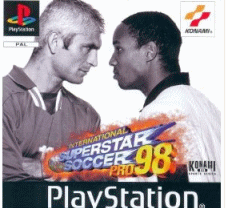
At the time of Fifa ’98, Konami’s International Superstar Soccer (ISS) series was critically acclaimed (especially the SNES outings) but, commercially speaking, wasn’t true competition for EA. KCET’s (Konami’s Japan-based dev team) ISS 98 on the PlayStation, with its solid gameplay and attention to detail (Zidane’s bald spot made it’s digital debut here), was a definite warning shot to EA and an indication that spectacular things were to come from ISS in the future.
The fluid passing and movement of the later games was evident here as was the awful presentation and commentary. Cups and leagues aside, the game’s main value was in the excellent two-player mode which lent itself to tighter games rather than the high-scoring goalfests of the Fifa series.
ISS ’98 was good, arcadey fun with some well-realised touches and a taste of the realism that would become the series’ hallmark.
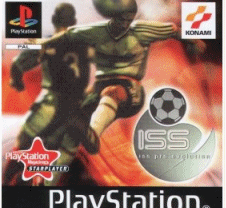
Right here is the game that gave Konami almost a decade of critical dominance. ISS Pro Evolution Soccer (known to fans as either ISS, PES or Pro Evo rather than its rather cumbersome full name) was an incredible game. It improved on the gameplay of ISS ’98 in almost every aspect and introduced the ‘Master League’ mode which allowed you to earn points, based on your performances, which could then be used to buy new players, essential considering the team of why-are-we-here footballing misfits that you start with.
Again, multiplayer matches were fair and balanced with no two games being the same and with no real sweetspots for scoring you really had to work for your chances. Attacking players could use subtle turns to trick AI and human opponents before rifling in several types of shot or, if using a weaker team, you could attempt the long ball approach and spoiling tactics to scrape your way to victory.
Personally my favourite thing was the slide tackling. Never unfair, never random. If you mis-timed a tackle, you knew it way before the ref pulled out a card but with practise the slide tackle became one of the most useful techniques in the game.
The only downside with the game was the lack of licensing of real-life players. Instead, they used misspelled names (commonplace in football games) although some of them were in CAPITALS where as others weren’t which smacked of a rushed translation job. It was a early glimpse into a lack of care and attention that would come to haunt the series in the future.
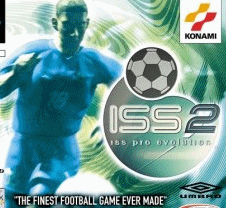
ISS PES2 was more of the same. A much-hyped link up with Sports Interactive (the developers of Championship Manager) meant that player stats were a fair bit more realistic (and now rated out of twenty not ten) and the Master League now had two divisions (with you starting in the lower one). Other than that it was business as usual with some minor tweaks to the match engine (slightly better keepers, deadlier through-balls, smarter team-mate runs and improved shooting).
The best thing about the Master League at this point was finding the perfect players for each position. Babangida’s speed and shooting meant he made an excellent low-cost striker whereas Jaap Stam could marshall any defence and was worth half-a-dozen goals a season when he went up front during corners. The unofficial rule was to not use classic players but Beckenbauer’s ability to accurately find a striker with a long ball from defence made him an essential pick as well.
Licensing was still a mess as with the previous game, but with the only way to get proper names being playing Fifa 2000, it was well worth putting up with it. ISS Pro Evo Soccer 2 wasn’t a much of a leap forward from its predecessor but gave us fans a reason to play for another year anyway.
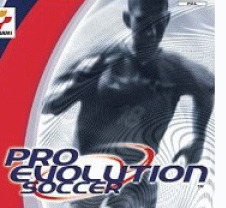
When Pro Evo moved onto the new generation of consoles Konami dropped the ISS tag saving it instead for KCEO (Konami’s other dev team) and their, frankly awful, football games. Instead KCET went with the Pro Evolution Soccer name that we still have today.
Pro Evolution Soccer was the series debut on the sixth generation of gaming machines but, as with most early PS2 games, was simply a slightly better looking but empty feeling addition to the series. It wasn’t great looking compared to other PS2 games though and the awful commentary was still in place. The game was also a fair bit more sluggish than the rather zippy PS1 games but was a solid entry in the series.
The PS1 version however was outrageous. In weeks of play I was only able to find one significant difference between this and ISS Pro Evo 2: Michael Owen’s hair was now blonde (for some reason). Everything else was exactly the same as the previous game. Including, shamefully, the price tag. With hindsight I probably shouldn’t have been surprised.
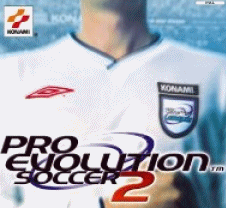
By the time Pro Evolution Soccer 2 came out, the series had firmly established itself as the smart choice for football gamers. FIFA by this point had gone to pieces completely and was regarded as a bit of a joke in gaming circles. Seabass’s team had gotten used to the PS2 hardware by this time and PES2 felt as zippy and realistic as the PS1 games had. The licensing however was struggling to outdo itself in the crapness stakes with Man Utd now being called Aragon and West Ham were known as Lake District (despite the East London club being nowhere near the Lake District but nevermind).
Oddly, the player names were still a mess especially the Dutch national side which now saw all the players renamed to ORANGES01, ORANGES02 etc rather than the usual slightly-changed names (including the unlockable classic players). A smarter developer would have given the Dutch team proper but incorrect dutch surnames but Konami chose the easier, stupider option for no discernable reason.
The Master League now added a third division and the training mode was given a little more depth with pre-set challenges to attempt. No great shakes but seemingly enough to guarantee the game a 93% Metacritic average but with the pace of the PS1 games and the processing power of the PS2 hardware, this was the essential sports game of the year.
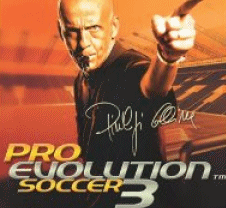
Here’s where it gets interesting (about time – Readers).
PES3 is a great game but it’s a great game for the same reasons that ISS Pro Evolution Soccer was a great game on the PS1. The reviews were full of cliches about this being ‘the beautiful game’ and an amazing entry in the series but compared to PES2, it wasn’t that much of a step up. It wasn’t ‘amazing’. Sure, if the last game you’d played was Total Football on the Amiga, then yeah it was amazing but by this point we’d all had five years of PES excellence.
Graphically things had improved a bit, with better player details and pitches, and the Master League was now split into regional divisions and included cup competitions (equivalent to the Champions League and domestic cups). On the pitch your AI team mates would now run to meet short passes rather than gormlessly waiting for the opposition to step in and nick it but the game also introduced some weaknesses that were ignored by reviewers desperate to proclaim this the greatest game of all time.
If the ball was anywhere near the middle of the pitch, the goalkeepers would stand at the edge of their box. Spraying the ball out to a half-decent winger, taking a step into the opponents’ half and taking a shot practically guaranteed a goal and not just a Beckham-esque effort. It wasn’t uncommon to see a weak shot roll tamely into the net from such a distance.
Also, it was far too easy to intercept the ball if the keepers tried to roll it out of the area which meant that you always had to get him to boot the ball out into a contested midfield. These annoyances were unfortunately ignored by the journalists but, to make matters worse, Konami’s response to the latter one was typically lazy.
The training mode from PES2 was now incorporated into the Master League but training your players would take hours (if you wanted the full benefits of it) which became a massive chore when all you really wanted to do was try and buy Thierry Henry and start a new season.
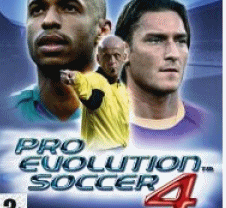
By this time, the Pro Evo series was starting to irritate me. I loved playing the games (and infact PES4 is probably my favourite of the entire series) and each iteration would spend more time in my PS2 than any other game but it was becoming obvious that the games were just tweaks of what had come before and for every improvement or fix there was a new annoyance in its place.
This year’s ‘update’ to the Master League saw players’ ages affecting their statistics. Young players would improve, older ones would deteriorate. Aside from that it was the same old, same old although this time with added cheating. Veterans didn’t need any time to adjust to the game as it was nearly identical to PES3 and so would start their Master League seasons on the hardest difficulty with the aim, for hardcore players, being to win every game and it was here that the game revealed its true colours.
Certain games, no matter what, were unwinnable. Without fail, once or twice a season your players (regardless of form) would have a game where they would miscontrol passes, scuff shots and regularly give the ball away. You’d struggle valiantly until a hoofed, looping pass was played over your unusually static defense. 1-0. Game ended, not splendid. This was when PES got its reputation for being scripted.
Of course, the fanboys had a response ‘yeah but that’s like real football’ but PES tells you in advance what a player’s form is going to be for that game and when your star striker has a red arrow telling you his form is excellent, then you don’t expect him to shoot like John Terry did last summer.
Konami’s inelegant solution to the keeper interception problem was to make an invisible wall that players couldn’t run through during goalkicks. Nice. Still, it saved them having to, you know, work on the keeper AI.
Oddly, keepers were now ultra-susceptible to chipped shots from the edge of the area but worst of all if you spent any time in the opposition’s penalty area you were almost guaranteed a penalty. I was able to get five in a row. This was due to the fact that the AI no longer tackled but rather just fouled you. Again, Konami’s response to this problem would be typically awful.
The final straw was that, despite no major graphical improvements, the game was plagued with v-sync tearing and slowdown. Again this wasn’t really picked up by the reviewers but did get noticed by several fans of the game. Sure, the problems I’ve listed are annoyances but, as I wrote back then, there was no reason for the series to introduce new faults and problems when the game engine clearly wasn’t being improved each year apart from the odd tweak that wouldn’t have been needed if I, or any other PES player, was gametesting it.
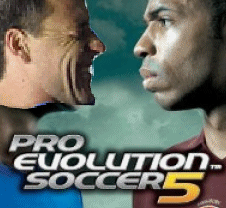
PES5 still somehow managed to get a 92% Metacritic average but by this point the cracks were beginning to appear amongst the fanboys. The game, whilst still effectively being the same game it ever was, took a different approach to previous PES titles by stripping away all the speed and style by massively downgrading the speed of your players and their touch. Suddenly it was nearly impossible to jink past a defender which meant that the game relied a lot more on the passing.
However, for reasons known only to Konami, the passing was ruined by an offside system that was beyond twitchy, with the referee blowing his whilst every few seconds. To compensate for this a little, long range shooting was massively improved (and the goalkeepers flapped at everything like that inept twat who’s in goal for Spurs at the moment).
Like in PES4, the AI still couldn’t tackle which led to even more stopping and starting as they fouled you every time you got near them. However, in a year’s worth of play I never once saw them get a yellow card. Yep, the game was broken. Not just flawed but actually broken.
Other wierd issues include the game being harder on 3* difficulty than 6*, the chipped shot no longer working (you could attempt a chip, and indeed the goalies were still awfully placed to stop them, but your player wouldnt be able to lift it more than a couple of feet off the ground – awful) and, worst of all, the AI never seemed to score against you. They didn’t even try. They’d get the odd goal occasionally (when scripted to do so) but for the most part they didn’t even attempt it. Again, this wasn’t really noticed at the time by the reviewers.
The finishing touch was that the game no longer had a crowd. They’d show up in cutscenes but in the game there were just empty stands. Allegedly this was to improve performance even though the game still suffered from slowdown and was certainly no better looking than PES4.
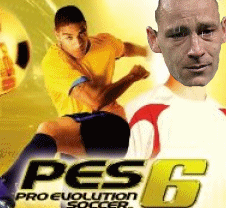
The last meaningful PS2 PES game, PES6 did the expected and reverted back to the style of PES4. The speed was brought back and dribbling was now as slick and fluid as it ever was. A much-needed bit of new content was added in the ‘International Challenge’ mode where you got to pick your national team squad and take them through World Cup qualifying and the finals. It wasn’t much but it was the first new mode in eight years. So that was something.
On the pitch, it really did feel like PES4. Exactly so in fact. On the leading Pro Evo fansite (www.pesfan.com) I had stated after PES5 that PES6 would revert back to the PES4 style of football, with faster, more effective dribbling and less powerful shots and, when faced with the evidence, even the PES-fans had to admit that Konami were taking the piss a little (including Pesfan’s excellently-named moderator Ted Maul).
Aside from reverting the gameplay back two years, the crowd was back, making you wonder why it ever went away, and there were some nice additions like mix and match kits (allowing you to pick home or away shorts and jerseys before a match incase your kits clashed) but overall it felt like yet another meaningless addition to the series.
The game got 89% on Metacritic but for a series once regarded as near-perfect this was a clear step backwards.

Whilst PES6 went on disappointing discerning fans on the PS2, the Xbox 360 version really brought new levels of fail to the series.
The Metacritic score of 79% was only kept high by clueless, non-gaming publications giving it 100% (The Times Online for example). The game was pretty much a straight port of PES5 from the PS2 with sluggish dribbling and powerful shooting. The major attraction, online gaming over Xbox Live, was ruined by awful netcode (games would freeze leading to accusations of cheating and shredded rep scores) and the community’s insistence on using Inter Milan (thanks to the game’s cover star, Adriano, being a footballing T-800).
The Master League was still the same old tired bollocks that everyone was now bored of and the PS2’s ‘International Challenge’ mode was missing. Also, there was now no edit mode at all which made the lack of licensing even more galling. Especially with some of the licensed players having their names spelt incorrectly. Effectively this was, features-wise, on a par with the earliest of Pro Evo titles.
PES6 on the 360 was, by far, the worst game in the series and should have been roundly panned but that’s gaming for you. In the meantime Fifa ’07, whilst not being anything like the finished article, was a massive improvement over previous games in the series and was packed full of nice touches including online radio sports headlines. At this stage the two games were arguably as good as each other…
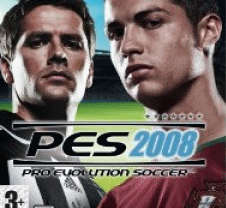
Konami, the worm has turned. With FIFA ’08 scoring 82% on Metacritic, PES 2008’s 76% (hugely generous considering Peoww’s definitive review giving it a 4/10) meant that not only had Konami lost the fans but also the reviewers (aside from the occasional stupidly high score from whatever clueless idiots were unable to let go of their fanboy instincts).
Improvements-wise there was, yet again, very little to get excited about. The “new set pieces system, allowing gamer to make taller players come up for corners and free kicks and full control of the wall” offered ‘new’ functionality missing since the days of PES4 and the ‘Teamvision’ AI system was all well and good except it played EXACTLY like the old games. Spray it to the wing, beat the full-back, pass it to the striker, commit keeper, square it. Goal. No adjustment needed. The AI would also still make the same stupid runs into offside positions, just like they always had done.
The online mode was broken and laggy. So much so that Seabass promised that Pro Evo 2009 would ‘fix’ all the problems and that he would have liked to have delayed Pro Evo 2008 as he knew it had problems. Pro Evo 2009 was also going to be a “complete re-write”… *ahem*
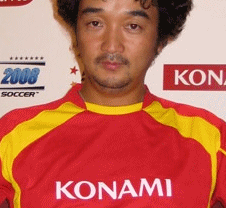
Pro Evo Soccer 2009 came out last month and hasn’t been reviewed on Peoww. The reason is that I simply cannot put any more money in Seabass’s pocket. The man is a hack, a con-artist and a failure. He’s taken arguably the best football gaming series ever and destroyed it.
PES 2009 scored 73% on Metacritic (again artificially high thanks to idiot sites wanking off about it) whilst Fifa ’09 scored 87% and is almost universally thought of as the better game. Common complaints are that the game still hasn’t actually evolved at all since the late ’90s and the online mode is still, unbelievably, laggy and broken (despite promises from Seabass that the game wouldn’t suffer the same problems as PES 2008).
The one major addition to the series is the ‘Be a Legend’ mode which is ripped off directly from Fifa ’08 and is massively underdeveloped compared to the Fifa ’09 version and, in ten years’ worth of Pro Evo, that’s probably the biggest innovation the series has gotten.
So there you have it. A game that stood tall in the late ’90s and should have gone on and improved further to dominate the genre completely, like Sensible Soccer did when SWOS game out, but Konami’s complacency and EA’s trial and error approach means that Pro Evo is now the second choice and no amount of fanboy protestations can alter that truth.
